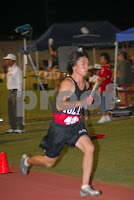
this weekend i experienced the centripetal acceleration. I was inside a car with my friend and we made a turn on one of the intersection. As we turned the corner, i thought about the ideas of centripetal acceleration and started explaining it to my friend. I told him that because we were going at 40 mph on the straight and made a turn with a constant velocity, and with the radius of the intersection curve being about 10m or so, we can calculate the centripetal acceleration. i simply converted 40mph into kmph, which is 40mph*1.6km/mile = 64km/h. Now i could apply that velocity-squared/radius equation and solved for the acceleration, which was approximately 409.6km/hr^2. when i told this fact to my friend who was driving, he was impressed in how fast we were accelerating towards center as we turned. I also explained to him about how important free-body diagram was when dealing with inclined plane problems. Because regular physics students are studying work and energy right now, i was helping him out by teaching what i learned in ap physics. That is, as i said, draw freebody diagram.


